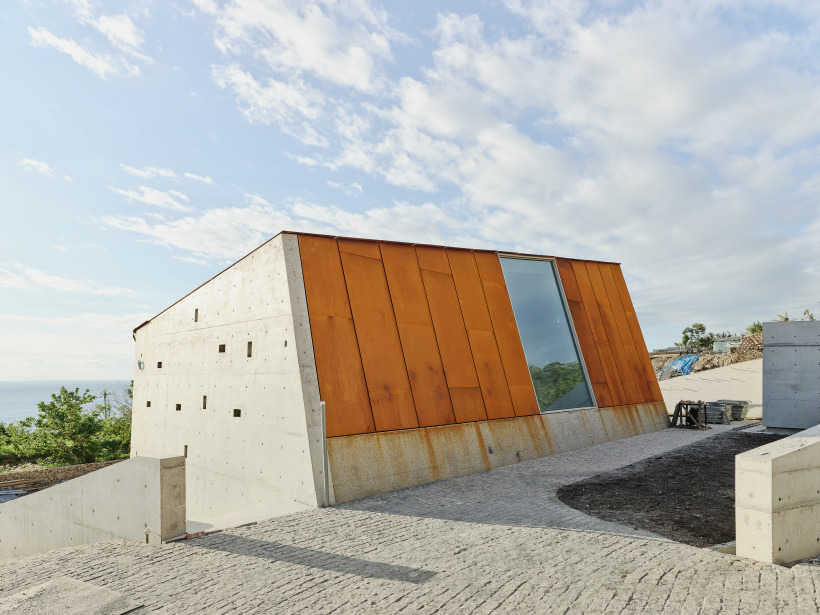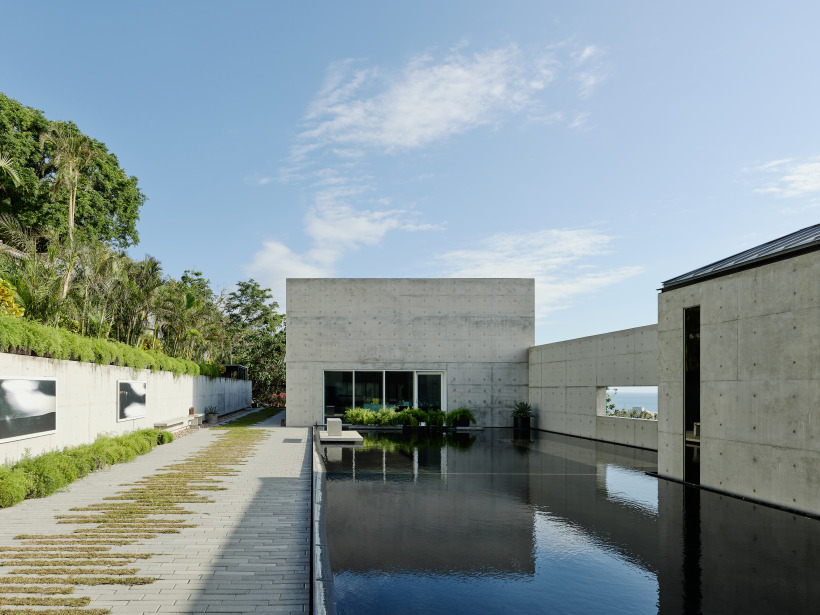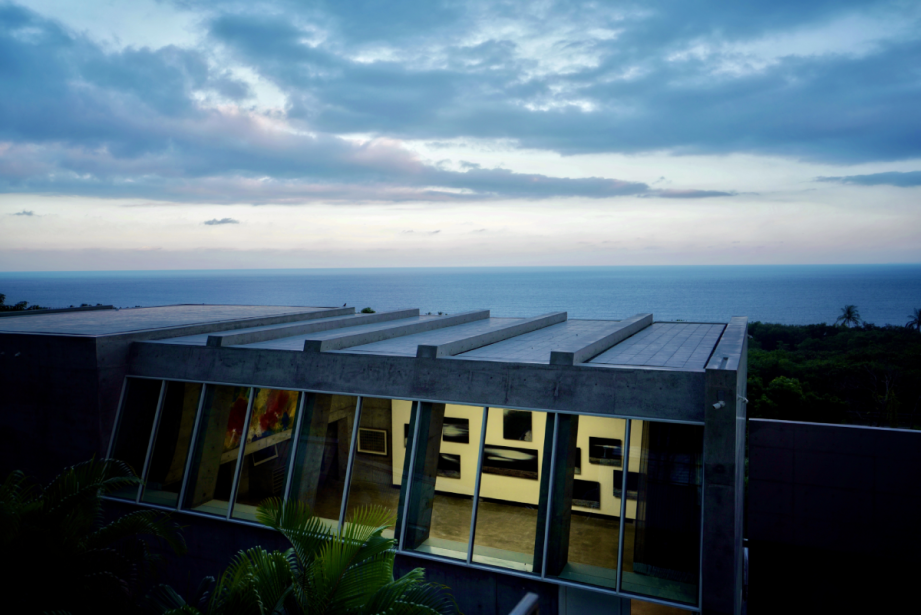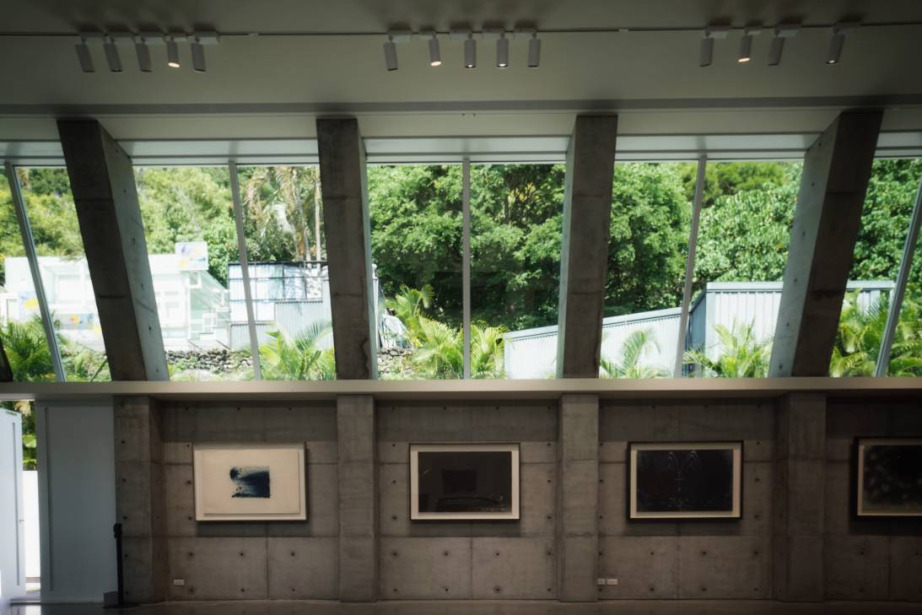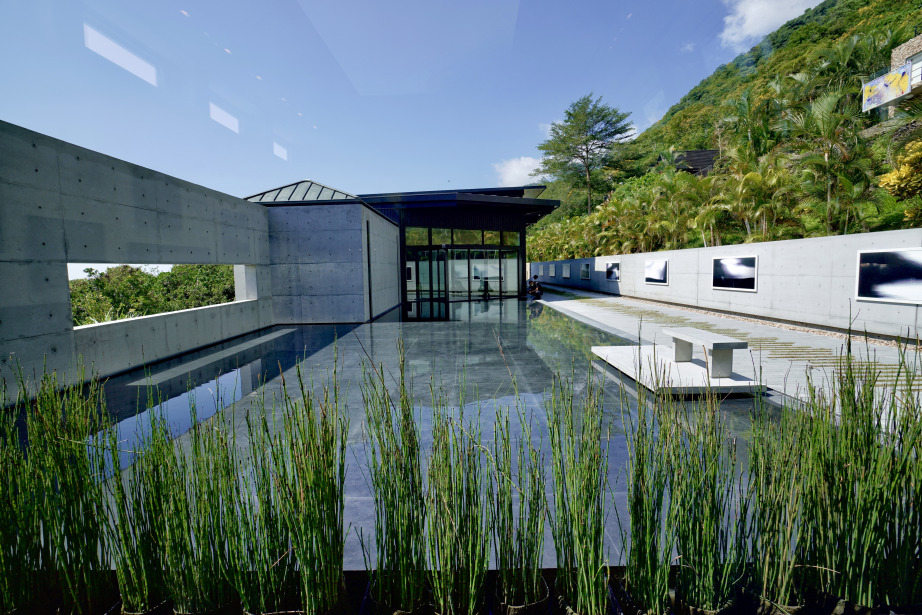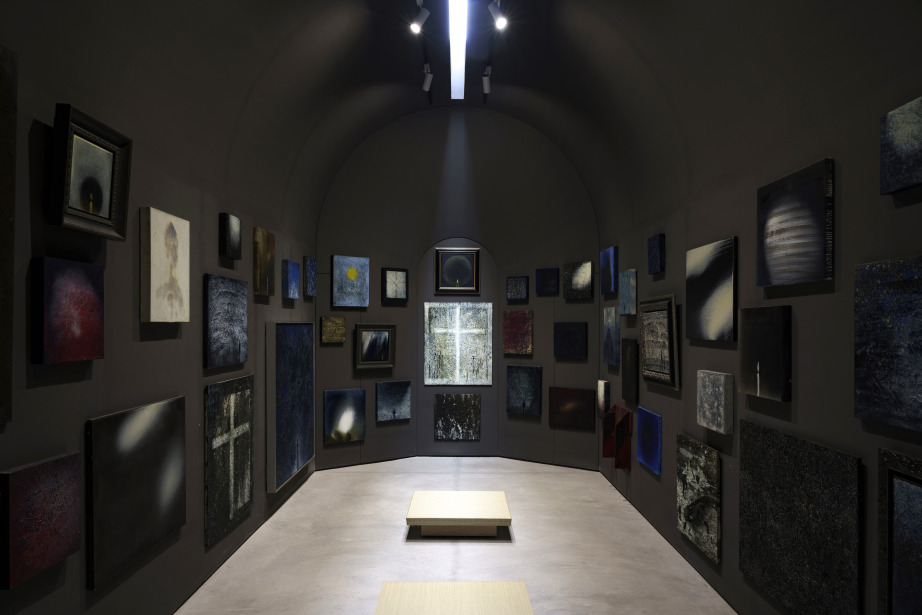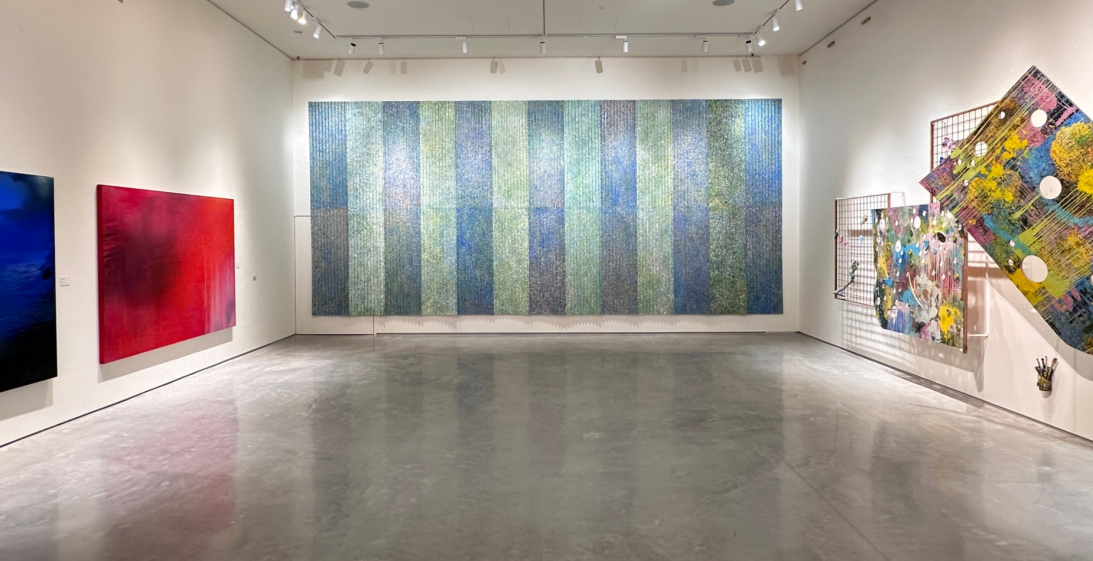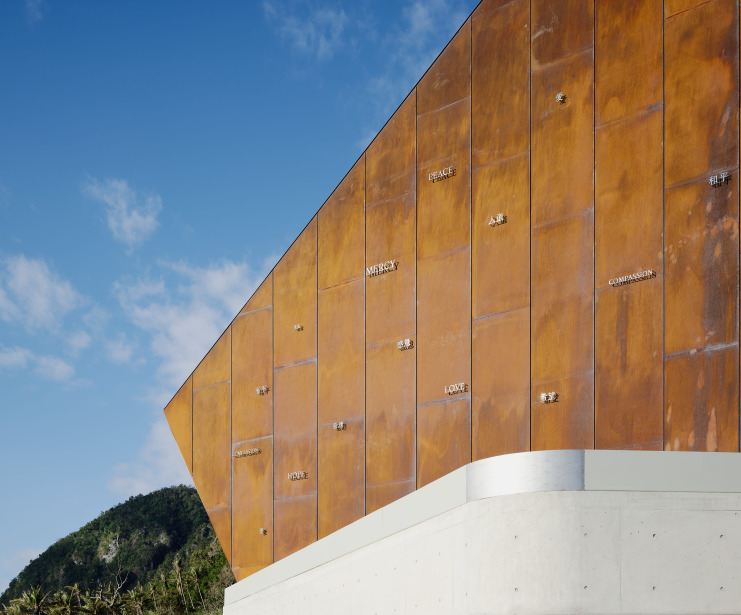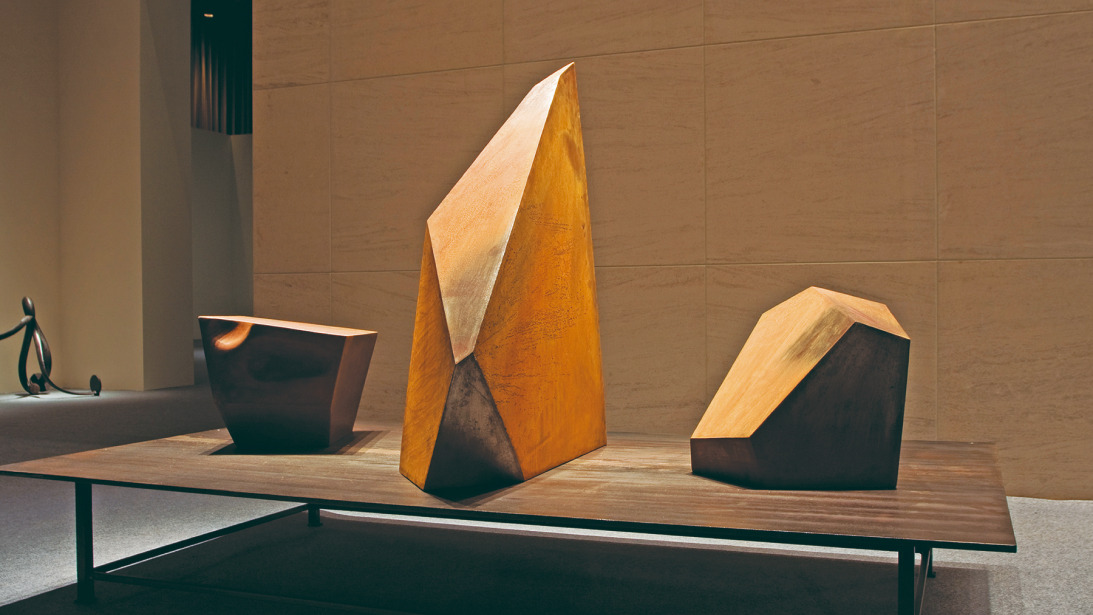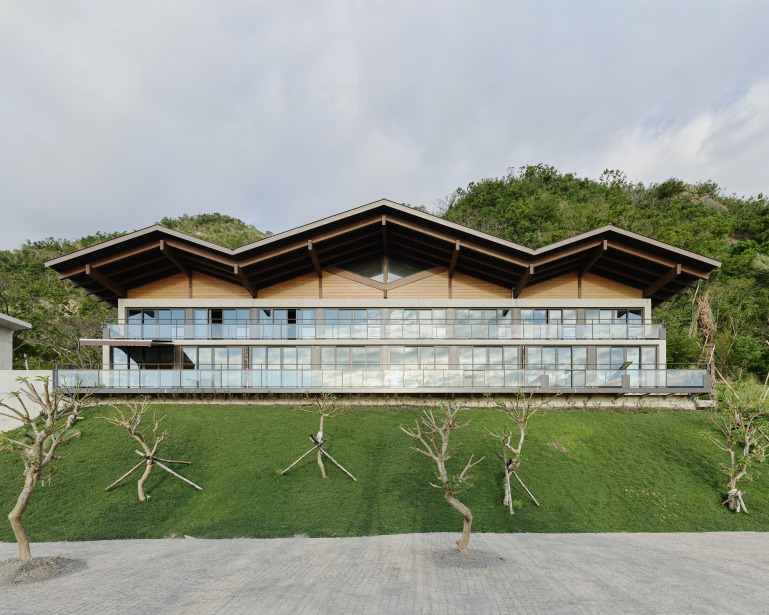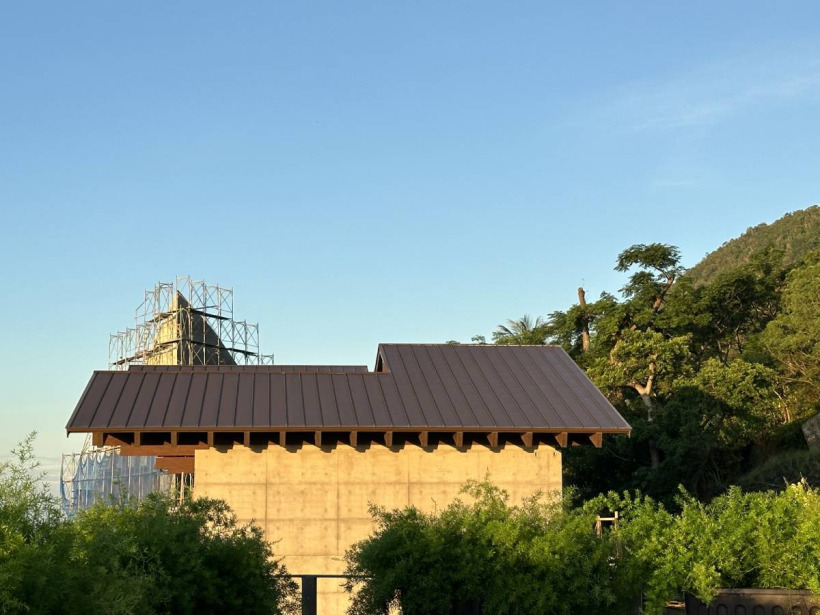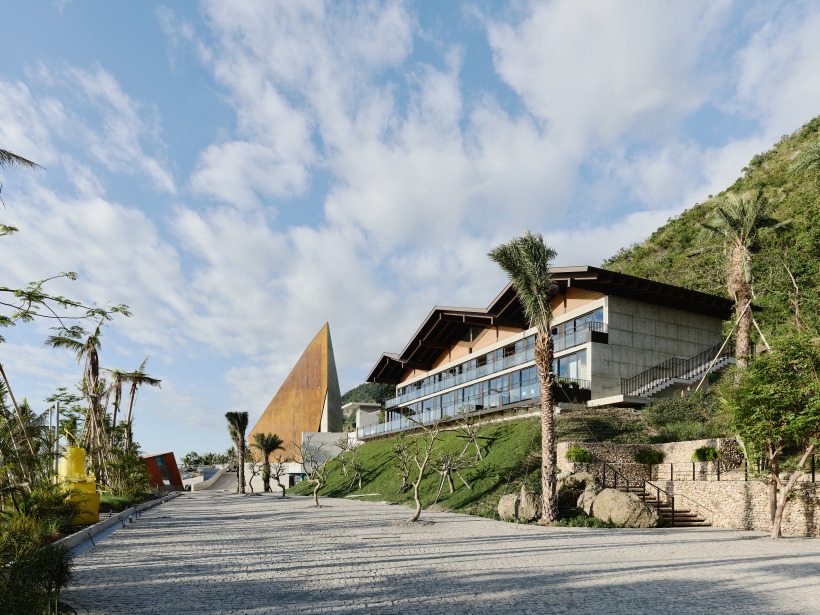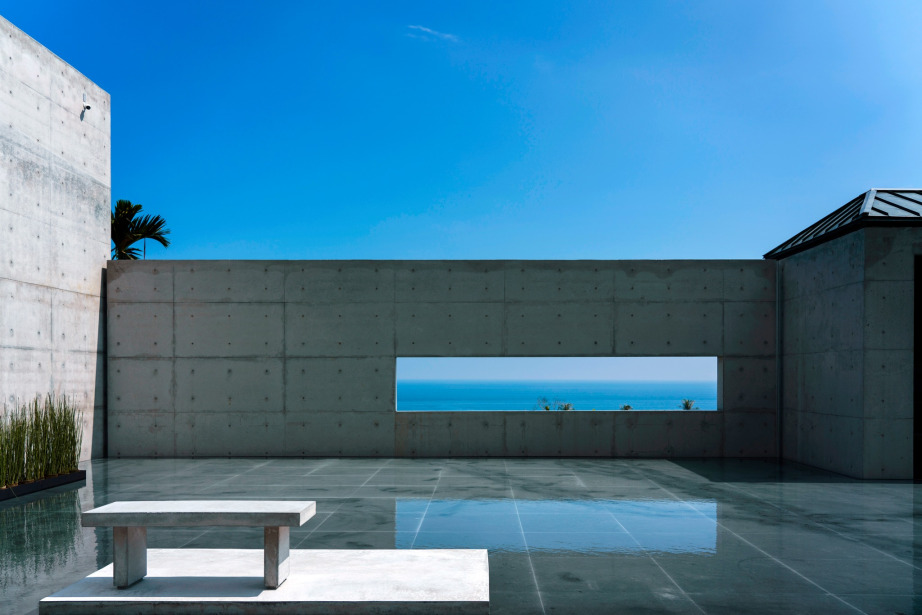An Art Center that Integrates Nature, Art, and Architecture
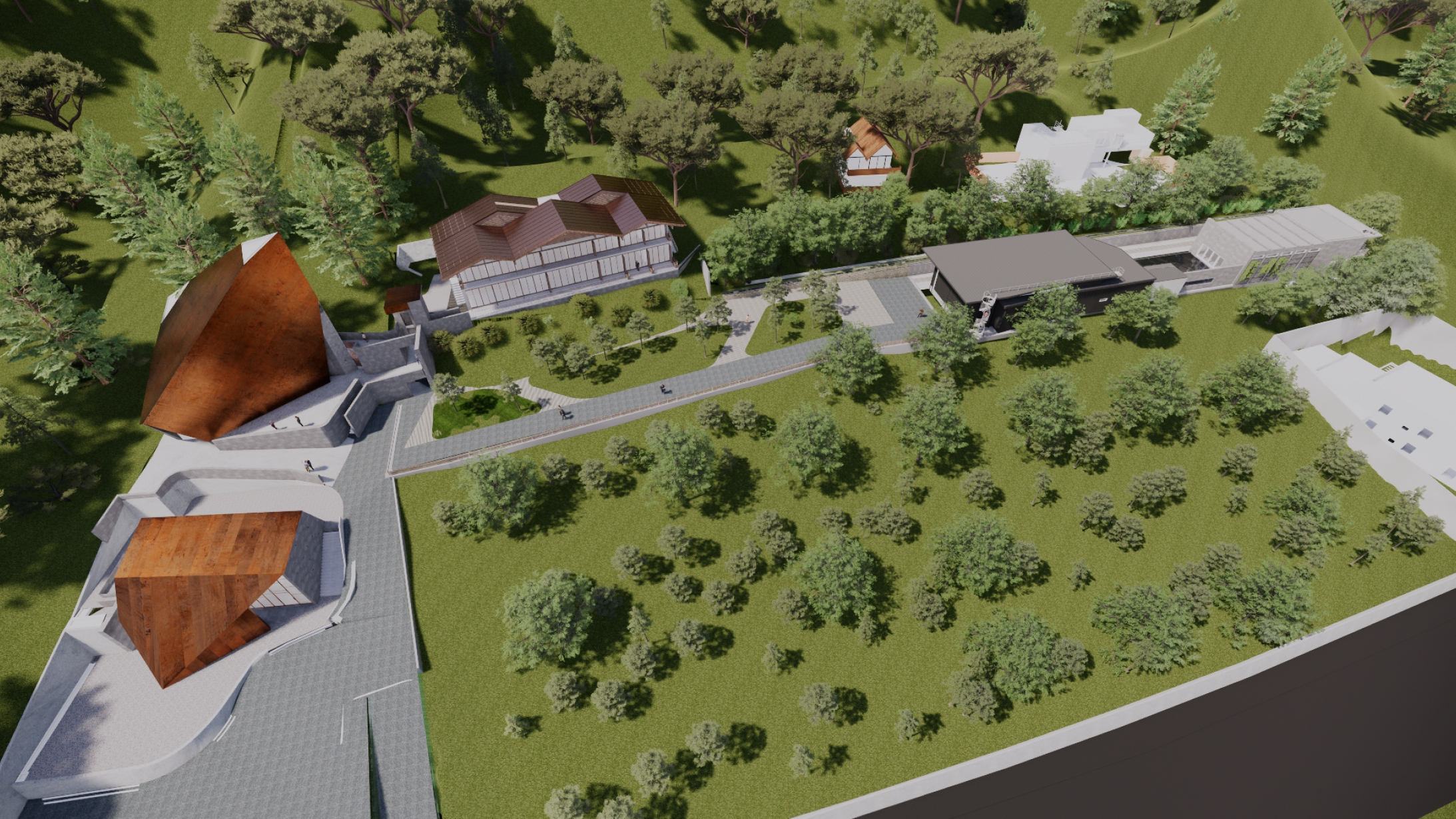
Facing the Pacific Ocean, the Paul Chiang Art Center, an expansion of Paul Chiang’s former studio, is located in the harbor village of Jinzun, Taitung. Bathed in sunlight and surrounded by breathtaking natural beauty, Chiang emphasized during his first meeting with architect Michael Lin that he wanted the space to embrace its natural surroundings, focusing on the broader environment rather than simply being a venue for displaying artwork.
The design prioritizes the natural landscape, with five buildings following the slope of the coastal mountains, positioned like a small settlement along the hillside. Each structure incorporates natural light and utilizes modest materials, primarily exposed concrete.
Chiang invested a great deal of thought and effort in collaborating with the architectural team on every building and every detail of the landscape: "I hope the Art Center will be the most comprehensive work of my life."
- Kung-Yuan Reception Center
Inspired by Paul Chiang's 2007 steel sculpture Farm House, the structure rises like a monumental rock, standing proudly against the mountainside. Its design draws upon the ancient wisdom of indigenous stone-slab houses, incorporating wind-resistant contours, a concave base that tapers elegantly to a pointed peak, and a solid foundation built to withstand the relentless forces of typhoons and earthquakes. The roof, crafted from corten steel—a material cherished by Chiang—will, over time, develop a striking reddish-brown patina, gracefully aging with time.
- Shinyi Gallery (Gallery 1)
A slanted roof with windows is a memory from Paris. Architect Michael Lin recalls Paul Chiang once telling him, "I hope to create in an environment that feels like Paris," which deeply resonates with Lin. After many trips back to Paris and having created Notre-Dame de Paris in a small attic, Chiang’s desire wasn’t for a specific type of house, but rather for the freedom that environment offered—an experience of finding oneself through that sense of freedom. In response, Lin recreated the sloped attic windows beneath the roof, reminiscent of those found in Parisian homes, for Chiang.
Before the entire Art Center was completed, this exhibition hall served as Chiang’s temporary studio. Its design reflects Chiang’s creative needs: a spacious area with abundant natural light and no supporting columns.
- Chenbro Gallery (Gallery 2)
Paul Chiang’s classic series, including Pisilian, On the Wings of Song, and Jinzun, were created before the renovation of his studio.
During the renovation, the upper half of the exterior was clad in metal, while the lower half was composed of Chiang’s meticulously tested exposed concrete, arranged in a grid pattern that reflects his aesthetic of "simple but not monotonous."
Inside the exhibition hall is a dedicated "meditation space." Architect Michael Lin explained, "I wanted the light to descend very slowly, in a quiet, almost lonely manner." His goal was to create a sense of distance in a space where none existed, inviting calmness. He believed that in such silent, serene moments, a person could develop introspection and a sense of distance from themselves—precisely what the meditation space is intended to evoke. Chiang is particularly fond of these intimate spaces, often designing similar areas in his exhibitions to offer visitors a moment of quiet reflection.
- Cheng-Han Gallery (Gallery 3)
Rising nearly 20 meters into the sky, this structure takes inspiration from the central form of Paul Chiang’s Farm House sculpture (center piece), magnified to a 1:20 scale. It stands as one of Chiang’s most cherished buildings in the art center. Years ago, architect Michael Lin spotted the sculpture in Chiang’s studio and remarked, "Perhaps we could transform this into a building!" Thus, the concept for the entire art center was born, with the logo also drawn from this iconic piece.
Like the reception center, the third exhibition hall features a corten steel roof. The words "Compassion, Peace…" engraved upon it are phrases that once graced Chiang’s paintings, reflecting his enduring care for universal humanity. Inside, the hall holds some of Chiang’s most spiritually resonant works, including a looped pendant chandelier designed by Chiang himself. As you step into this dimly lit space, you’ll feel the natural light gently streaming in, showering the room with a sacred, ritualistic ambience before slowly dissolving into the walls.
Here, the light in and of itself is art.
- Dreamers Pavilion, Café Debussy
Located on elevated ground with sweeping views of the Pacific Ocean, the guesthouse—named Dreamers Pavilion—is nestled beneath a large, layered wooden sloping roof. It serves as a temporary residence for honorary directors and visiting artists. On the ground floor, Café Debussy warmly welcomes all visitors from the Art Center. The name Dreamers Pavilion is inspired by a character from each of the sponsor’s three children’s names: Zhu, Hong, and Ting.
- Zhu: A harmonious fusion of architecture and art
- Hong: A celebration of Paul Chiang’s artistic vision
- Ting: A tranquil space where visitors can pause and rest
- Plaza
From the Plaza, sponsored by Wonderland Group, visitors can take in sweeping views of four of the five buildings within the complex. The surrounding greenery and large-scale sculptures infuse the space with vibrant, dynamic energy. Many of the sculptures were created by Paul Chiang using salvaged construction materials—transforming what was once discarded into works of beauty.
- Serenity Pond
The window in front of the Serenity Pond is one of the views Paul Chiang spent the most time refining. He carefully adjusted the proportions and height so that everyone—whether a child, an adult, or a particularly tall foreign visitor—could enjoy a beautifully framed scene. The view includes the sea, just the right amount of greenery, and, on clear days, even Green Island comes into sight. This thoughtful design reflects Chiang’s meticulous attention to detail.
- Acknowledgements
From its conception to completion, the Paul Chiang Art Center has undergone a decade of planning and dedication. It embodies the shared vision of its co-founders, artist Paul Chiang and Mr. Stanley Yen, together with their partners at the Foundation.
United by the aspiration to create a world-class cultural landmark in the Hualien-Taitung region, they sought to enable this land to engage in artistic dialogue with the world. Though the journey was fraught with challenges, their unwavering belief and perseverance have brought this dream to life, which is now presented to the public.
We extend our heartfelt appreciation to the successive magistrates of Taitung County and their teams for their steadfast support. We are also incredibly grateful to the individuals and organisations offering invaluable assistance at critical moments. It is through their collective dedication that this vision has been realised.
